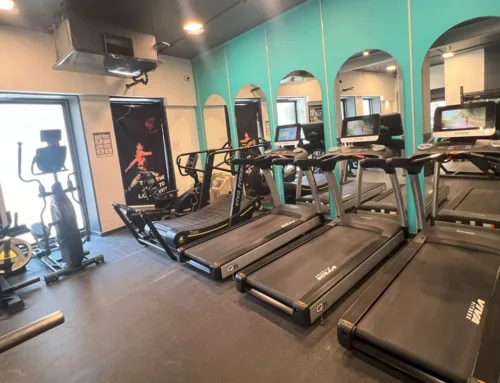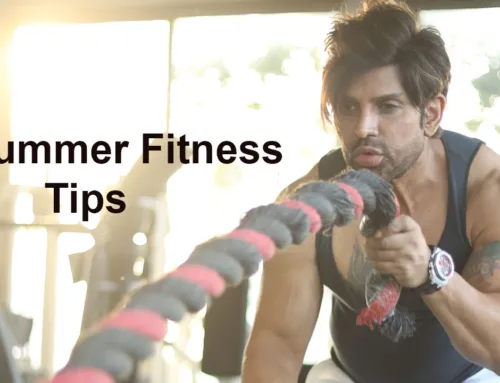As summer approaches and the temperature rises, heat-related ailments proliferate. Knowing the symptoms of heat exhaustion will help you recognise them if you or someone else is at risk of suffering from a heat stroke. There are preventative precautions you can take to work out in the heat without risk while subjecting yourself to high temperatures and humidity.
After reading these 7 tips for exercising in the heat, enjoy the outdoors!
How does heat affect my body?
Yash Birla says from his experience that your body is put under more strain when you exercise in the heat. During exercise, the atmospheric temperature and humidity can both raise your core body temperature. Your body sends extra blood to circulate through your skin in an effort to assist cool itself. This causes less blood to be accessible to your muscles, which causes your heart rate to increase.
High humidity puts more strain on your body because sweat doesn’t quickly evaporate from your skin. You run a higher risk of dehydration, heat exhaustion, or heat stroke after you cease sweating in hot, muggy weather. But how can you distinguish between heat stroke and exhaustion?
Heat Exhaustion vs. Heat Stroke
A lesser type of heat disease called heat exhaustion can appear after several days of exposure to high temperatures and insufficient or uneven fluid replacement. Heat stroke could result from heat exhaustion if it is not untreated. The most serious heat-related sickness is heat stroke. Within 10 to 15 minutes, a 103°F or higher increase in body temperature is possible.
Act soon if you experience heat exhaustion. Get comfortable by lying down somewhere cold and air-conditioned. Use cold compresses or take a cold shower. Take off any constrictive clothing or extra layers, and hydrate with water or sports beverages. A heat stroke, as opposed to heat exhaustion, necessitates rapid medical intervention. Call an ambulance if you become unconscious or continue to vomit. While waiting for EMTs, relocate to a cooler area and apply cold compresses to lower body temperature.
The majority of heat diseases can be avoided with the right safeguards. Exercise in hot surroundings should be gradually acclimated over the course of 7 to 14 days to improve heat tolerance and reduce the risk of heat illness. Give your body time to adjust before beginning an exercise programme in those conditions.
7 Tips for Exercising in the Heat
- Avoid the hottest part of the day – Exercise in the morning or late in the day to escape the severe heat. Between 11 am and 3 pm, the temperatures are at their highest. When it’s hot and humid, pay attention to the weather forecast and exercise extra caution. Since perspiration can’t effectively drain in humid conditions, your body may struggle to chill your skin. Yash Birla prefers to workout in the evening after his work hours to help him relax more.
- Drink plenty of fluids – Drinking water before and during your workout is essential for staying safe while working out in the heat. Don’t put off drinking liquids until you feel thirsty. Drinking water frequently will help your body to sweat and cool off, says Yash Birla. According to research, drinking 16 to 24 ounces of water before working out is advised.
Take no salt tablets. Your chance of being dehydrated may rise as a result. Avoid drinking water that is too cold because it could give you stomach discomfort. Finally, avoid consuming beverages that are high in sugar, such as soda, alcohol, or caffeine. You may experience fluid loss if you consume these kinds of beverages.
- Regularly use sunscreen – Make use of broad-spectrum sunscreen with a minimum SPF of 30. Reapply at least every two hours, or as soon as you have perspired. Skin cancer risk and your body’s capacity to regulate its internal temperature are both decreased by sunburn.
- Wear light, breathable clothing – Wearing light, well-ventilated clothing is important when getting ready for an exercise. Polyester, nylon, and Lycra are examples of synthetic materials that quickly absorb perspiration and permit evaporation. Light colours like white reflect heat better than other colours if you are exercising directly in the sun.
The head is the body component that needs to stay cool the most. If you’re feeling really exhausted, soak your hat in cold water while you wear it. Although wearing a hat won’t always make you feel cooler, it might make you feel more comfortable.
- Know your limits – Yash Birla advises to recognise and honour your physical limitations. You are more vulnerable than a well-trained athlete who routinely trains in the heat if you are not in good physical shape and are not prepared for activity in warm weather. Pay attention to your body, and if you start to feel weary, queasy, or lightheaded, take a break in a cooler area. To avoid jeopardising your fitness and exercise goals, give your body adequate time to recover and refuel in between exercises.
- Replenish your electrolytes – You could wish to buy a sports drink to replace electrolytes if you want to work out for a few hours. These beverages seek to replace fluids as well as salts and minerals. Pick foods with fewer calories and less sugar.
- Create a training plan – Consider doing a quick workout consisting of intervals of speed walking or climbing a few steep hills. Increase the length of your rest breaks if you’re performing an interval workout that involves walking bursts followed by recovery intervals. Increase the length and difficulty of your workouts gradually when you start exercising outside more frequently.
Keep in mind that most heat-related ailments may be avoided. If your typical high-intensity workout is too difficult in the summer heat, split it up into several smaller workouts throughout the day. Enjoy a secure outdoor summer by taking care!






[…] reading these 7 tips for exercising in the heat, enjoy the […]